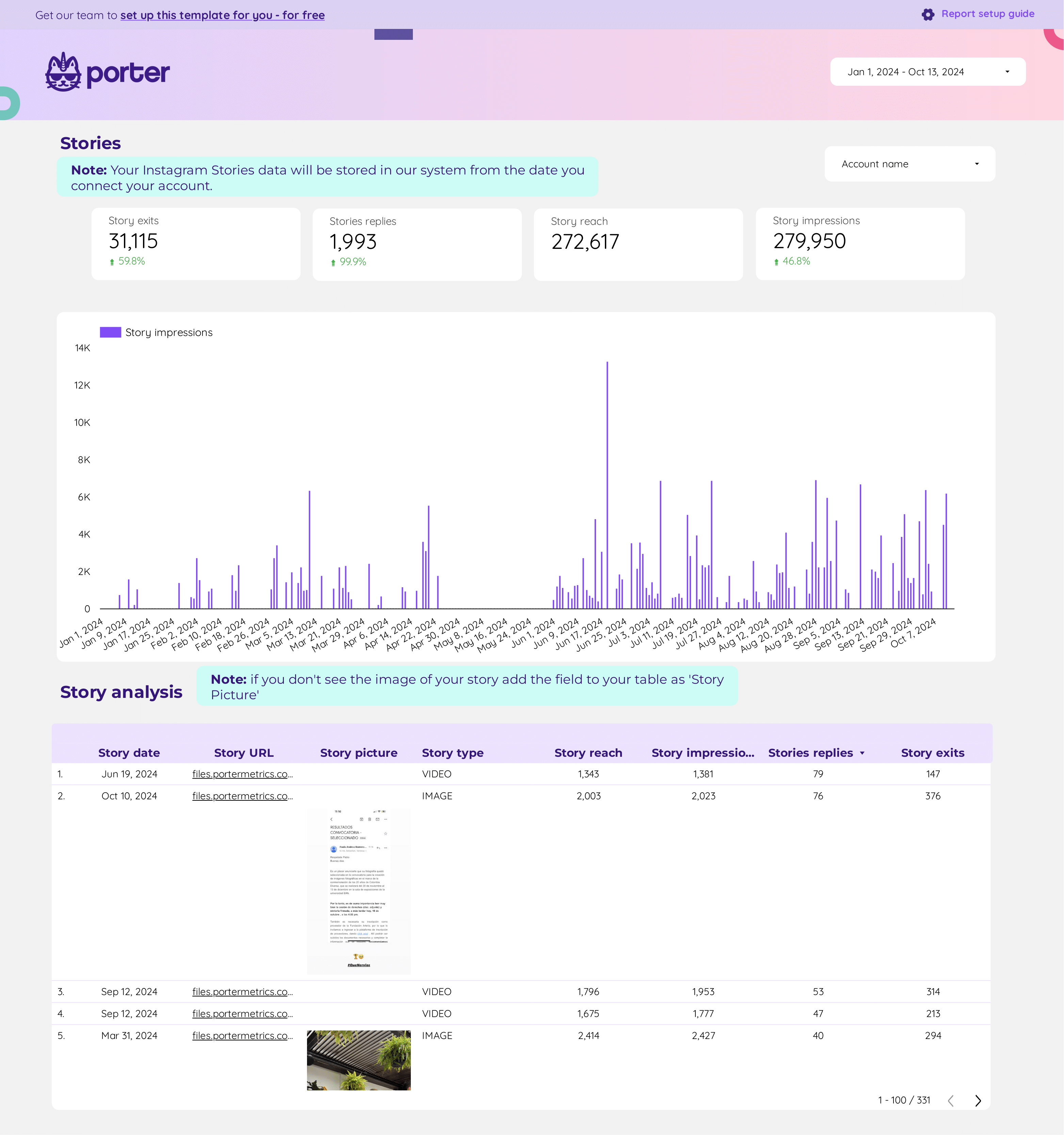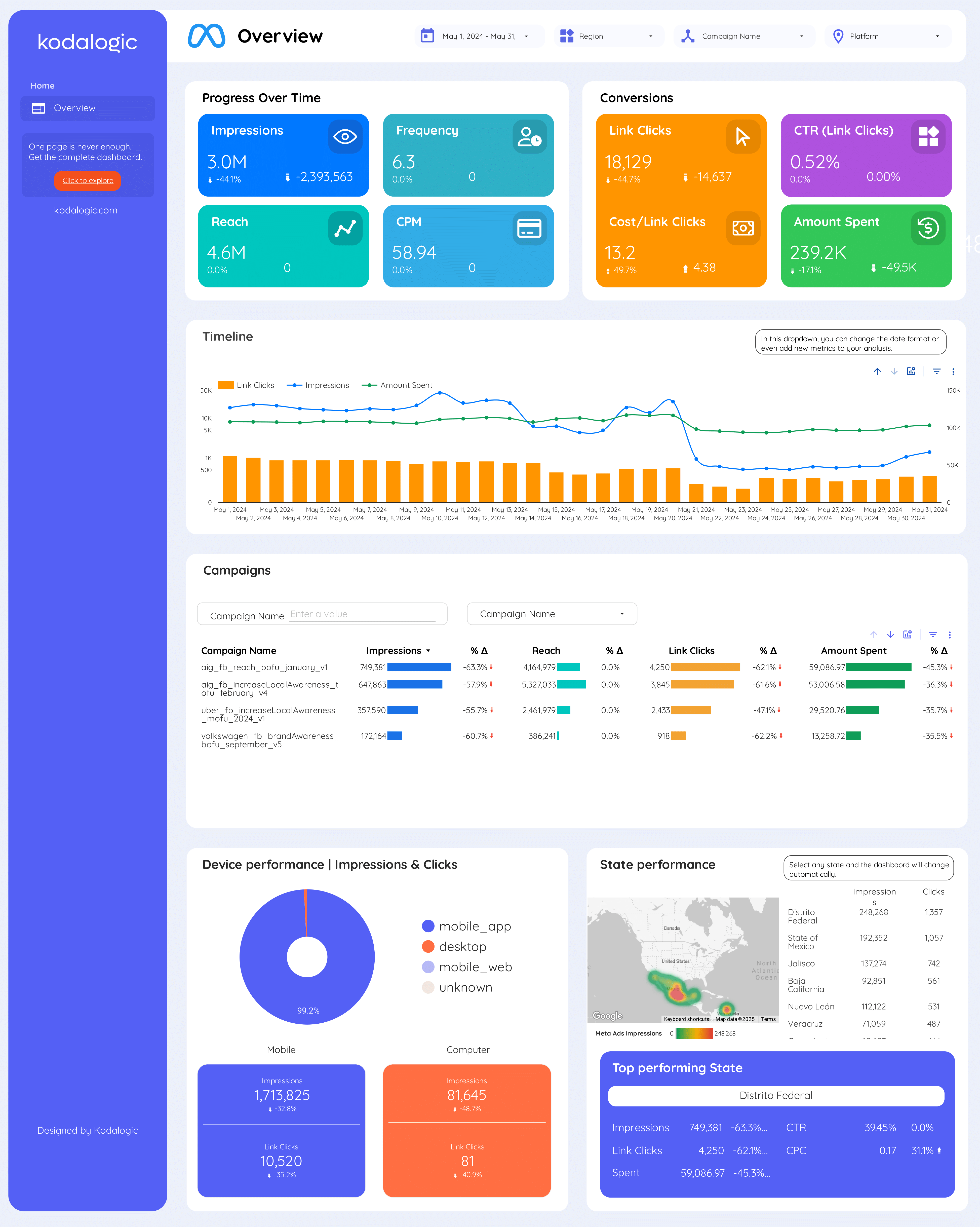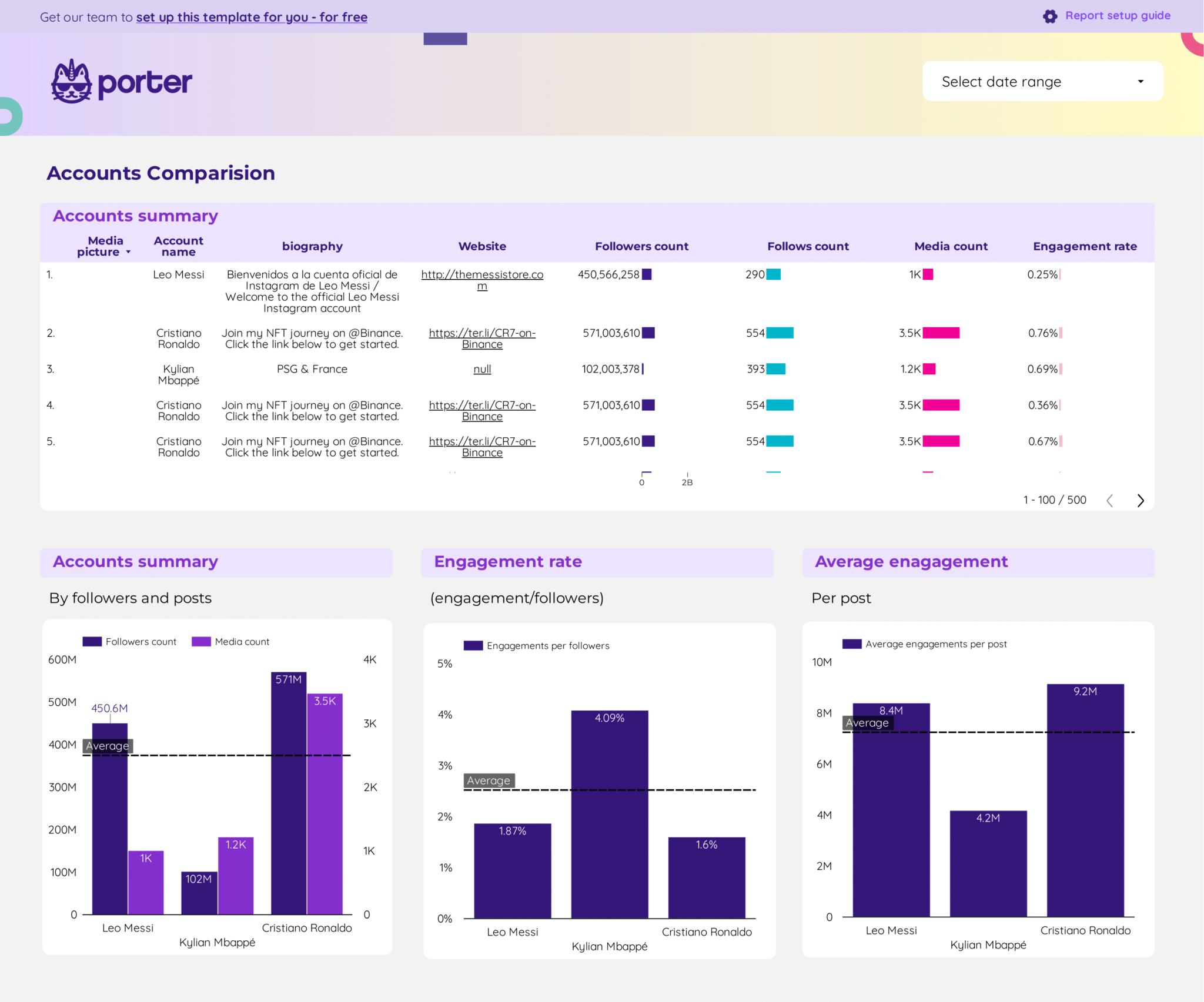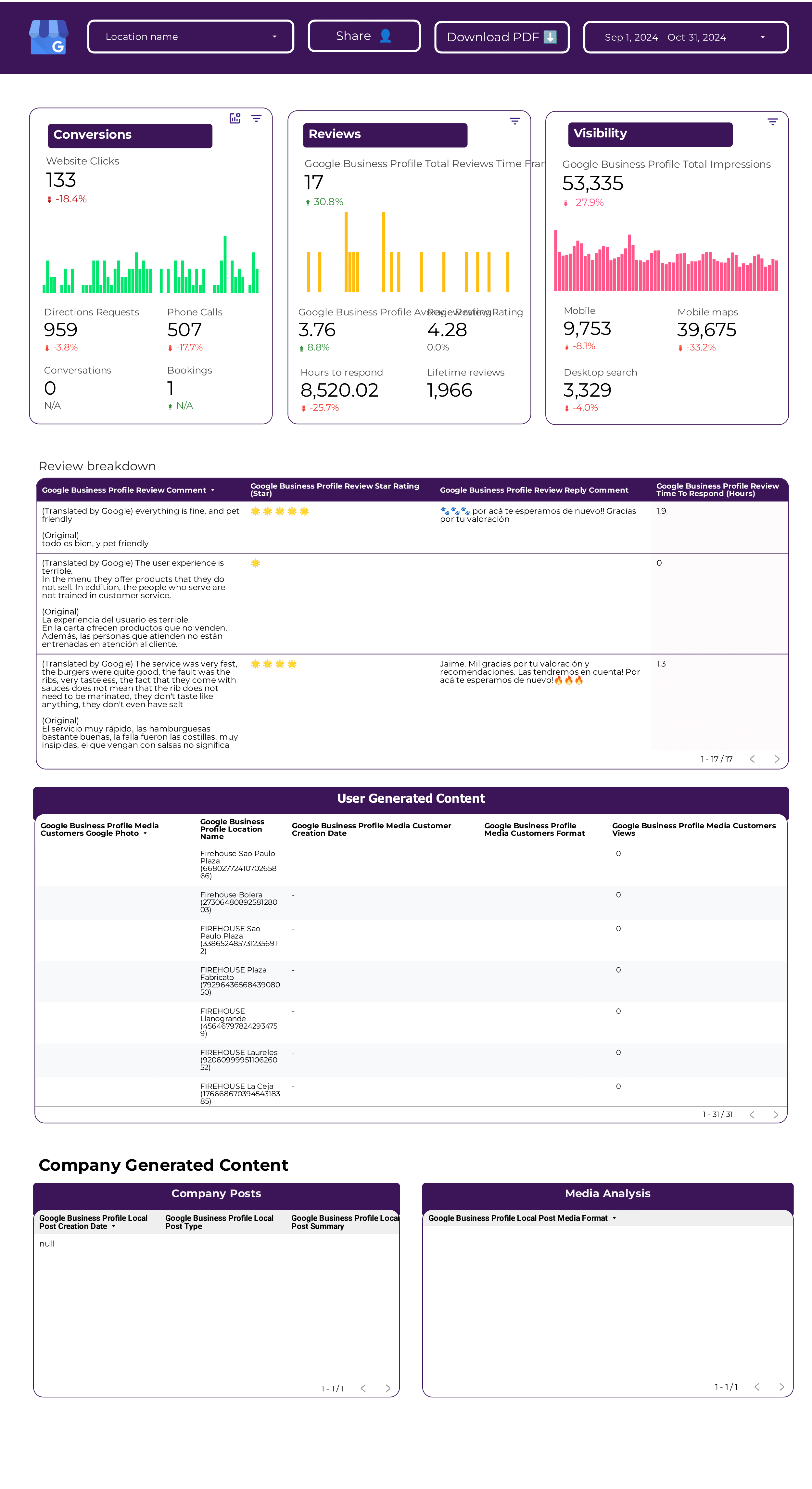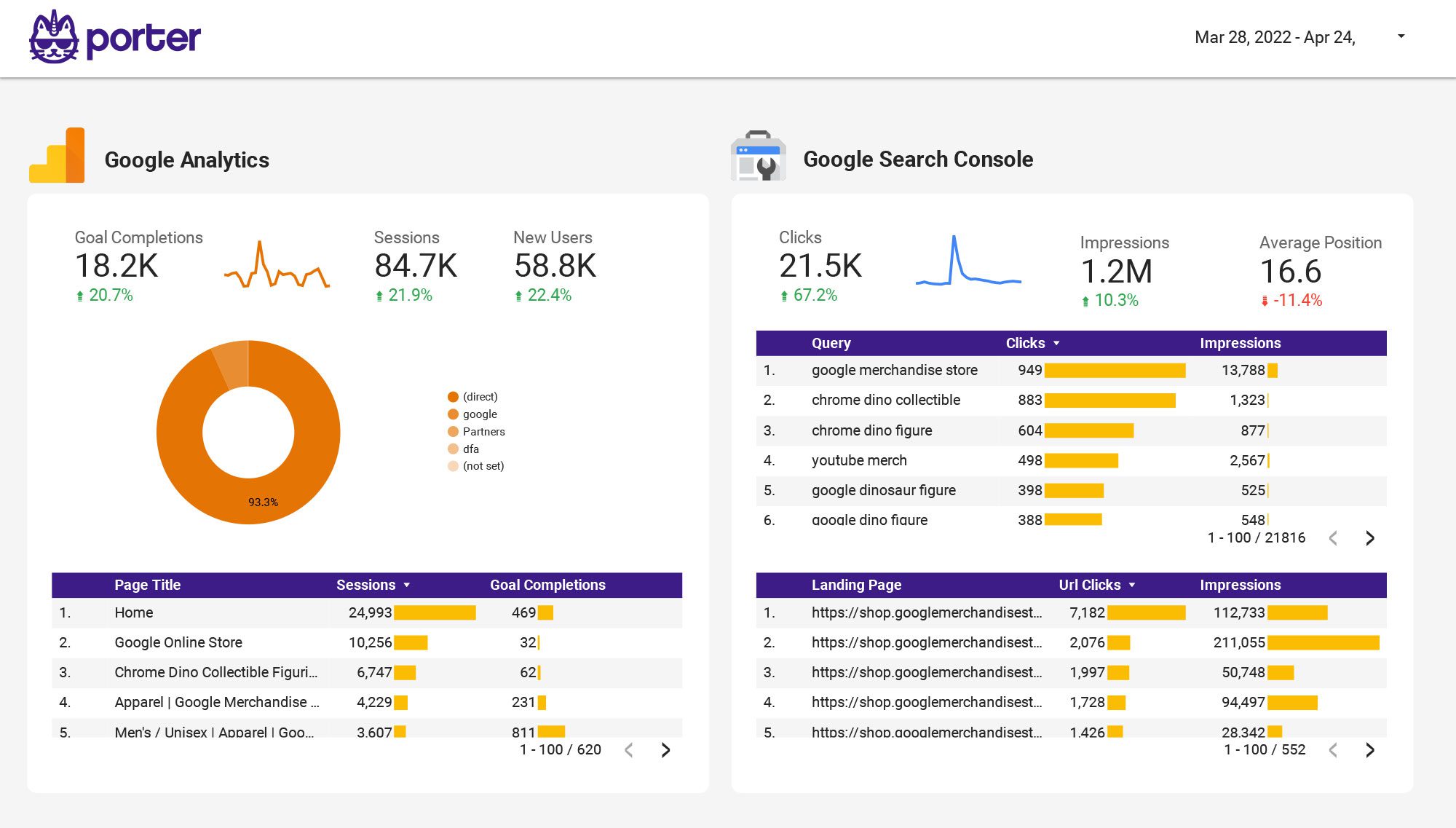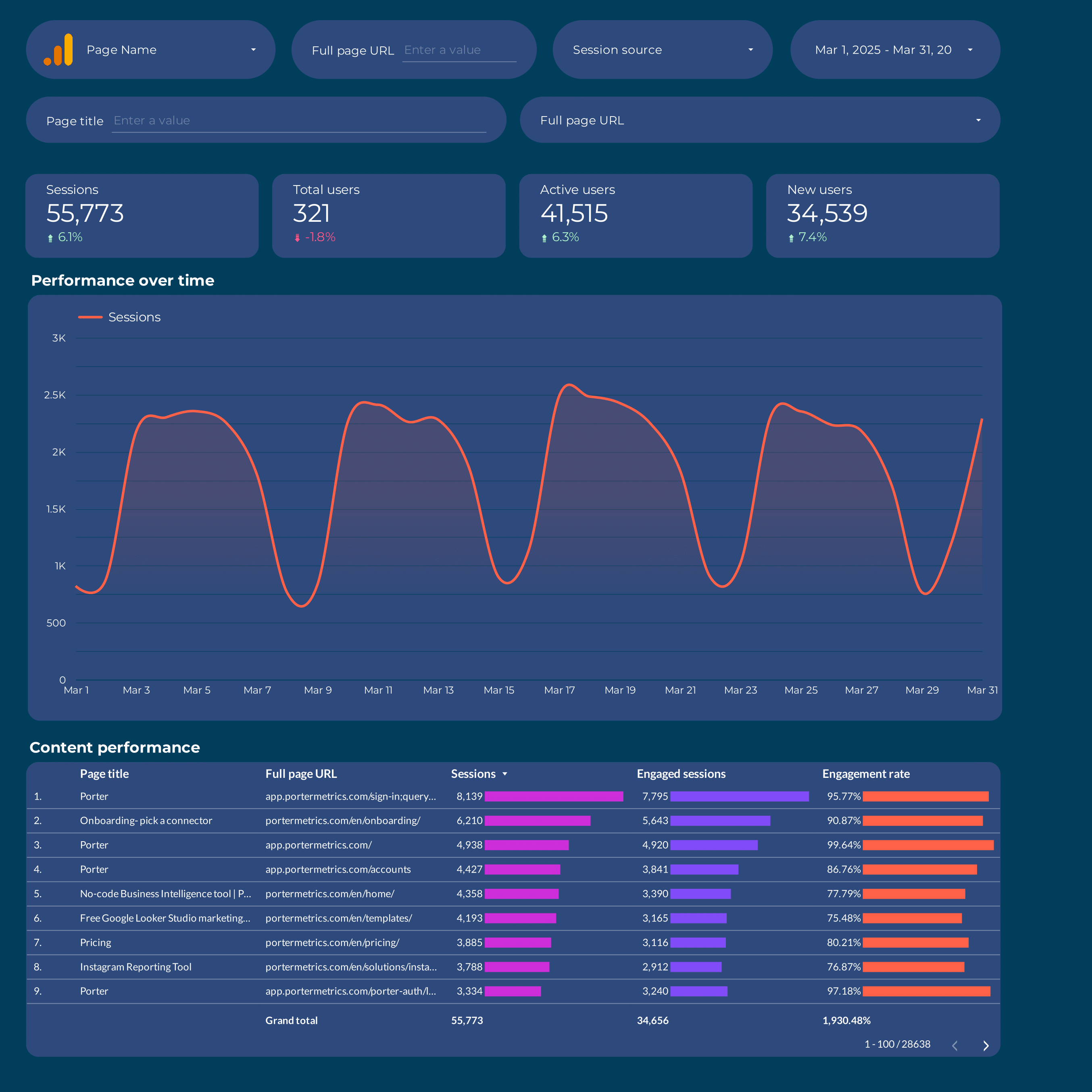What is a data analyst dashboard?
A data analyst dashboard is an interface tool that consolidates data from multiple sources (e.g., SQL databases, Excel, Google Analytics) to track and display key performance indicators (KPIs) (e.g., data accuracy, processing time, error rates), enabling analysts to monitor data quality and performance and create presentations for stakeholders and executives.
Data analyst dashboards are typically built using flexible tools like Google Looker Studio, Power BI, Google Sheets, or platform-specific solutions to enable high customization and integration of multiple data sources.
What to include in a data analyst dashboard?
An actionable data analyst dashboard balances context and specificity based on the audience (executives, managers, and analysts) and their use cases.
Executive data analyst dashboards
Executive dashboards for CIOs, CTOs, and stakeholders show data's impact on business decisions. Reviewed weekly, monthly, or quarterly, they include:
- Data quality analysis: by source, using validation checks and error tracking.
- Data processing efficiency: processing time, resource utilization, and throughput.
- Trend analysis: patterns and anomalies in data over time.
- Add text for additional context to translate metrics for non-technical audiences. Present in slide decks and simplified Looker Studio reports.
Data manager dashboards
Manager dashboards have cross-department views with drill-downs to see performance by team, project, data source, and process stage. They help align teams, define strategies, and include:
- Cross-department reporting: overall data quality and processing efficiency across departments.
- Goal tracking: compare current performance vs objectives.
- Audits for prioritization and spotting issues
- Data source analysis for integration and optimization.
- Data cleansing and transformation processes
Operational Data Analyst Dashboards
Operational dashboards for analysts and data engineers have granular, customizable KPIs to solve technical issues. Monitored hourly, daily, or weekly, they cover:
- Data ingestion: data flow, latency, and error rates.
- Data transformation: processing time, accuracy, and efficiency.
- Data storage: capacity, usage, and retrieval times.
- Data visualization: dashboard performance, user engagement, and feedback.
Operational data analyst dashboards are highly customized, built in flexible tools like Google Sheets or Looker Studio to enable data cleaning, blending, annotations, and integrating multiple sources.
How to build a data analyst dashboard?
To build a data analyst dashboard, connect your data sources, choose a template on Looker Studio or Sheets, build your queries by selecting metrics and dimensions, choose charts to visualize your data, customize the dashboard, design and share via link, PDF or email.
Here’s the breakdown:
Connect data sources
Define and connect the data sources to bring to your dashboard. Common sources are SQL databases, Excel files, Google Analytics for web data, CRM systems for customer data, and cloud storage for large datasets.
To connect your data sources, go to portermetrics.com, choose the data sources to bring to your dashboard.
You can follow these tutorials on connecting your data:
Choose a template
Choose from dozens of data analyst dashboard templates in Google Sheets or Looker Studio, designed for use cases like data quality monitoring, processing efficiency, and trend analysis.
Learn to copy Looker Studio templates.
While templates are the starting point. Make them specific for your business or agency. Map your specific metrics, especially custom data transformations, CRM contact data, and all the fields and metrics that you define as "key indicators" and "performance metrics".
Depending on your reporting tool—Google Sheets or Google Looker Studio, pick any of the dozens of templates created by our team and customers to solve your data analysis use cases, such as data quality monitoring, processing efficiency, and trend analysis.
Select metrics, dimensions, and charts
Once your dashboard template is downloaded, you may 1)modify it or 2) create a blank page to build it from scratch. Whatever the case, setting up a query always follows these steps:
- Select the data source and the account connected to it
- Choose metrics (e.g. Data accuracy, processing time, error rates, etc.).
- Choose breakdowns to segment your data (e.g. by date, data source, process stage, etc.)
You can follow these tutorials on adding data to your dashboards
Design
To make your data analyst dashboards truly white-label you can add logos, colors, fonts, and styling to mirror your brand.
Follow these tutorials to design your data analyst dashboards:
Share
Share your data analyst dashboards via links, PDF, schedule emails, and control permissions.
KPIs to include in a data analyst dashboard?
Data analyst dashboards should include a mix of data quality, processing efficiency, trend analysis, and resource utilization metrics and KPIs to fully understand the performance of data processes towards business goals. They include:
Data quality KPIs measure the accuracy and reliability of data:
- Accuracy metrics: error rates, validation checks, data consistency
- Completeness metrics: missing values, data coverage, data freshness
- Timeliness metrics: data latency, processing time, update frequency
Efficiency KPIs compare your data processing outputs to the cost, including:
- Processing time: average processing time per dataset
- Resource utilization: CPU, memory, and storage usage
- Cost: operational expenses, resource allocation
Effectiveness KPIs compare the input with the output from one data stage to another
- Data transformation: transformation success rate
- Data integration: integration success rate
- Data visualization: user engagement, feedback
Resource and cost KPIs show the bottom-line impact of your data processes:
- Resource usage: server uptime, resource allocation
- Cost: operational expenses, resource allocation
- Efficiency: ROI, cost savings
- Effectiveness: data-driven decision impact
To analyze these data KPIs, segment them by:
- Data source: internal, external, structured vs unstructured
- Time: Hourly, daily, weekly, monthly
- Process stage: ingestion, transformation, storage
- Business: department, project, region
- Data type: numeric, categorical, text, image
- Visualization: charts, graphs, tables

